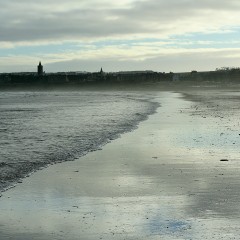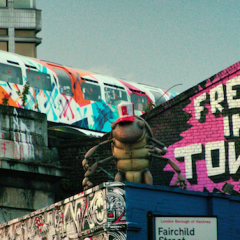Conference Report: What is the Contemporary?
University of St Andrews 1-3 September 2014 by Joseph Brooker St Andrews has become a significant focus for contemporary literary studies, not least because of the presence in the English Department of Dr Sarah Dillon (now departed for Cambridge, but the organizer of significant conferences here in recent years). This conference, though, had a subtly different focus from many in the field. It arose from the Institute for Contemporary and Comparative Literature in St Andrews’ School of Modern Languages. Crucial to making it happen were Margaret-Anne Hutton, Professor of French and Comparative Literature and Emma Bond, Lecturer in Italian and Comparative Literature, along with Colette Lawson (Lecturer in German and Comparative Literature) and Fabio Caiani (Lecturer in Arabic). The conference accordingly had an international flavour. Not only did delegates come from around the world to join the wealthy American golfers populating the town’s hotels, but their disciplinary interests were often outside English studies. One keynote speaker, Professor Lionel Ruffel, came to Scotland from the University of Paris 8 where he has been heading a research project on ‘The Archaeology of the Contemporary’. His keynote address referred to Giorgio Agamben’s text on the same question that formed the conference’s title. Other papers discussed literature originating from Germany, France and Iran. Professor Julika Griem came from the Goethe University in Frankfurt, though her current research focus is very local: John Burnside, Professor of Creative Writing at St Andrews. The international conference was also unusually interdisciplinary. A panel was devoted entirely to contemporary visual art. Diana Sykes, Director of Fife Contemporary Art & Crafts, joined a roundtable on Practising, Transmitting and Curating the Contemporary, and gave the perspective of a curator rather than an academic. Alice Crawford, from the Library of the University of St Andrews, talked about libraries as a site of contemporary practice. Charles Wilson from Oxford gave an intriguing, erudite address on music, and how the temporal experience of listening might illuminate ideas of contemporaneity. Rebecca Dolgoy provoked discussion with her work on museums and commemoration in Berlin. The conference was far more multi-disciplinary than the norm. In this way too it avoided the homogeneity risked by contemporary conferences in literary studies. Finally, and most unusually, the conference also considered multiple historical periods. This seems counter-intuitive: if we think of ‘the contemporary’ as our own time, with its particular issues of periodisation, we may not expect to hear papers on the distant past. But one of the proposed themes of the conference was ‘The Contemporary through Time’, with the assumption that every time may have known its own contemporaneity: ‘What did the term, or its (near) equivalent(s), mean in –...
New Issue of Alluvium Journal
Birkbeck's very own open access journal of 21st-century literary criticism, Alluvium, is back with a new special issue on contemporary ecocriticism, "Critical Environments." Guest edited by Dr Deborah Lilley, the issue considers interdisciplinary approaches to 21st-century ecocriticism, which engages with urbanised and humanised environments and challenges the dominant landscape-oriented focus of traditional notions of Romanticised (non-human) nature, nature writing, and landscape aesthetics. It covers contemporary environmental activism and the role of performance, the continuing popularity of (post-)apocalyptic visions of natural futurity, and the global interconnectedness of ecological change. The issue contains a closely focused set of articles: Deborah Lilley's "Editorial: Critical Environments," Astrid Bracke's "Re-Approaching Urban Nature," Matthew Griffiths' "Changing the Climate of Writing," Sam Solnick's "Performing Carbon (in the) City," and Louise Squire's "The Thoughts in our Head: A World." Tweet Featured image by Simon & His Camera under a CC BY-ND...



Recent Comments